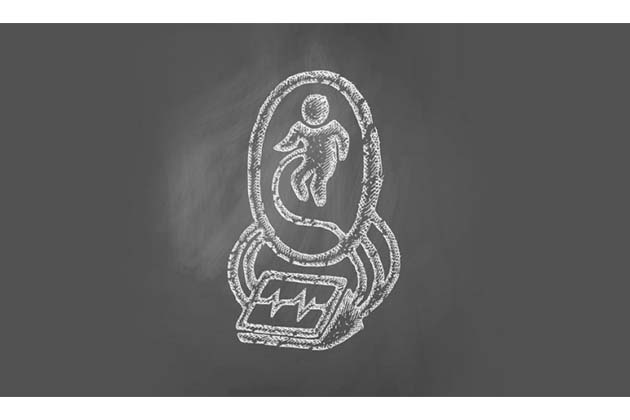En studie har med suksess utviklet og testet et eksternt livmorlignende kar på små sauer, og skaper håp for premature menneskelige babyer i fremtiden
An kunstig livmor designet og utviklet med den hensikt å støtte skjøre premature babyer har blitt demonstrert med suksess for første gang noensinne hos dyr (sauebarn her). Denne studien publisert i Natur Communications is a major scientific breakthrough for the year 2017 and has generated immense hope for preterm newborns. This is the kind of study that immediately strikes a chord with the general public as it has a huge potential to affect the lives of millions of preterm babies verdensomspennende.
Etterligner livmoren
Studien ledet av professor Alan Flake, en kirurg og direktør for Center for Fetal Research i Center for Fetal Diagnosis and Treatment ved Children's Hospital of Philadelphia, USA viser at lam som er født prematurt (ved tilsvarende 23 eller 24 ukers svangerskap). menneskelige spedbarn) ble holdt i live og så også ut til å utvikle seg normalt mens de svevde inne i en gjennomsiktig, livmor-lignende støttebeholder eller fartøy, kalt "Biobag".
This current novel system mimics life in the uterus as closely as possible by utilizing knowledge from previous neonatal research. It uses a distinctive fluid-filled plastic container or vessel attached to other custom-designed machines which provide the necessary physiological support. The fetal lambs grows in a sealed, temperature-controlled, sterile environment insulated from any variations (temperature, pressure or light) and hazardous infections, while breathing amniotic fluid as they normally would do in the womb. The baby’s heart pumps blood via the umbilical cord into the system’s low-resistance external oxygenator that very intelligently substitutes for the mother’s placenta in exchanging oxygen and carbon dioxide. This is extremely necessary since at this gestation period baby’s lungs are not developed yet to breathe in oxygen from the atmosphere. Different electronic monitors continuously measure their vital signs. For the system to be successful, its inflow and outflow apparatus have been continuously designed and redesigned at regular intervals. The lambs successfully continued to grow in the Biobag for full four weeks (670 hr over 28 days) after their birth and showed normal breathing, swallowing, eye movement, activity signs, sprouted wool and a very normal growth and organ maturation. Researchers call this as an “awe-inspiring sight” but nevertheless, they state that their system needs continuous evaluation and refinement.
The researchers did not try to extend viability to an earlier period than the current mark of 23 weeks because of several limitations which increase risks, including size, physiological functioning would impose unacceptably high risks. Most of the lambs from the study were euthanized before they reached full term for further evaluation; however one is now a sunt grown sheep.
Premature fødsler: en stor belastning
Det har blitt spådd at 15 millioner menneskelige babyer blir født premature (før 37 uker) hvert år over hele verden, og dette tallet øker bare. Hyppigheten av prematur fødsel varierer fra 5 % til 18 % av babyer født i 184 land over hele verden. Komplikasjoner som oppstår på grunn av for tidlig fødsel er en ledende dødsårsak blant barn under 5 år.
Flertallet av spedbarnsdødsfall tilskrives prematuritet selv etter betydelig forbedring i neonatalomsorgspraksis. Og selv om skjøre spedbarn som er i stand til å overleve i 23-23 ukers periode (30-50 prosent gjør det), må de fortsatt lide av dårligere livskvalitet, stå overfor permanente helseproblemer og til og med livslang funksjonshemming i mange tilfeller. Tilgang til omsorg på høyt nivå påvirker også resultatene forskjellig i hvert enkelt tilfelle. Disse scenariene legger også en økonomisk og følelsesmessig byrde på foreldrene så vel som helsesektoren.
Nå sauer, neste er mennesker?
This study tests and monitors the effects on fetal lambs and it is already known that prenatal lung development in sheep is very similar to humans. Though the sheep brains develop at a somewhat different pace than humans. The current system will need to downsized for human infants, who are around one-third the size of the infant lambs that were used in the study. If it is similarly successful for human babies in the coming 1-2 decades, there is an astonishing likelihood that extremely premature infants will continue to develop in chambers or vessels that are filled with womb like amniotic fluid, rather than relying on incubators supported by ventilators and won’t have to suffer from multiple invasive procedures.
Human testing which can be carried forward from this study is still, realistically speaking, a couple of decades away, but this study definitely predicts possible similar success on human infants. The main aim is to cross the threshold of 28 weeks for human premature babies, which then reduces any severe outcomes on life. Such an extra-uterine system/artificial womb if developed for growth and organ maturation for only just a few weeks can dramatically improve outcomes for premature human babies.
Dette er en tiltalende, ekstraordinær vitenskap
Looking at this study, we could start imagining a world where babies can grow in an artificially simulated womb thus eliminating possible health risks of pregnancy which affect the mother as well as the unborn baby. However, we cannot get carried away with these thoughts, because removing the most important element – “the creator and nurturer of life” – the mother from the entire process would really make growth of babies (from 0 till 9 months) a stuff of science fiction with the entire early development happening literally on a machine. The idea which researchers have propagated is not to “entirely eliminate” mothers but rather provide a technology to reduce and/or prevent mortality and morbidity caused by preterm births.
***
{Du kan lese den originale forskningsoppgaven ved å klikke på DOI-lenken nedenfor i listen over siterte kilder}
Source (s)
Partridge EA et al. 2017. Et ekstrauterint system for fysiologisk å støtte det ekstreme premature lammet. Nature Communications. 8(15112) http://doi.org/10.1038/ncomms15112.






































